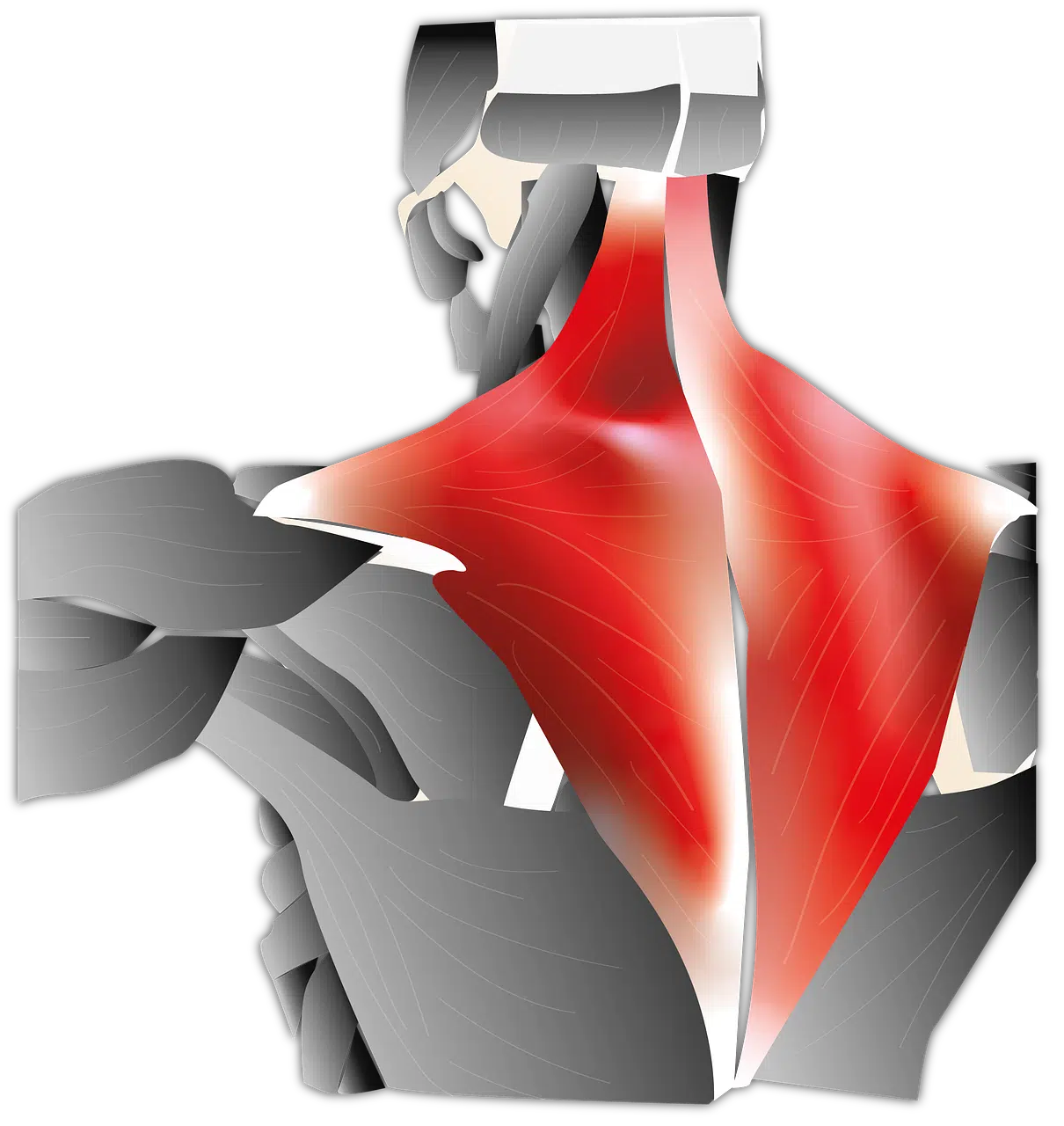
The trapezius muscle is located in the posterior area of the trunk and neck.
A trapezoid is a geometric figure that has the appearance of a non-regular quadrilateral where only two sides are parallel. Those that are parallel are considered bases and between them there is a distance called height . The segment whose edges are the midpoints of the sides that are not parallel is known as the median .
The term trapezoid comes from a Latin word that in turn derives from a Greek term. Among the types of trapezoids that are distinguished when analyzing the interior angles , right or rectangular trapezoids appear (those that have 2 right angles inside, one acute and the remaining obtuse), isosceles trapezoids (with a pair of acute interior angles and the rest, obtuse) and scalene trapezoids (all the angles inside them have different amplitudes).
trapezius in anatomy
For anatomy , the trapezius can be a muscle or a bone. The trapezius muscle is located in the posterior region of the trunk and neck. Humans have two trapezius muscles, which extend from the occiput and reach the dorsal vertebrae and shoulder blades.
As for the trapezius bone , it is part of the human hand, more precisely the wrist. It is a carpal bone that articulates with the first metacarpal bone, the scaphoid bone, the trapezoid bone and the second metacarpal bone.

In a circus, the trapeze allows you to do pirouettes.
A gymnastics and circus instrument
Within a gym or a circus , a trapeze is a piece based on a stick or rod located horizontally that is suspended from two ropes by its tips .
This stick allows you to perform different types of gymnastic exercises and pirouettes . It is common for one or more trapeze artists to swing high on the trapeze and jump long distances to leave one of these instruments and hold on to another.
Kafka's trapeze
The Austrian writer Franz Kafka wrote a work in which his protagonist was a man who was passionate about trapeze to the point of spending all his hours on it, even when he was not offering a show .
It is a story titled "A Trapeze Artist" and through it the author invites readers to make important reflections, mainly about the loss of innocence or the arrival of maturity for a person; about the figure of the artist in a community, who always ends up taking refuge in a space away from others because he feels that he is not understood; and about the pyramid of hierarchies that exist in our societies.
Regarding the first point, we can point out that originally the story was titled "First Pain" , so this hidden theme can be evident under the story; being that from the first suffering childhood is abandoned forever and it begins to be understood that life is lonely and difficult.
In the story, this trapeze artist suddenly discovers that he needs another trapeze and cannot understand how until then he was working and living with only one; then obtaining this new element will become your highest aspiration from that moment on. It is worth mentioning that previously, this man chose to live in a place where the rest of society could not access. At this point we understand Kafka 's vision of art , as a space where isolation is necessary in order to grow and refine the work. For this reason, the trapeze artist is constantly looking for a new space to work. The existence of the character depends on his decisions and his action, on the place he gives to art in his life.
Finally, just as in the circus there is a structure based on hierarchies, where the main link is the figure of the businessman and the last one is the one who exhibits his work (the trapeze artist), the same thing happens in societies. This "last ear in the jar" , however, is the one who best understands the meaning of life because he chooses to live in the heights, far from the light and the debased environment; separated from the rest of the world and from the other links in the chain of that circus in order to dedicate himself only to what he is passionate about and understand the essence of his life. When he asks for an extra bar, he does not do so in order for someone to occupy it and keep him company, but rather to improve himself further, he asks for it for himself to develop his capabilities to the maximum.
This story could help us understand much more about the true importance of art and the work that every artist has in their hands; So much so, that the decisions made regarding individual life and the development of art itself will have consequences on the result of the work.
